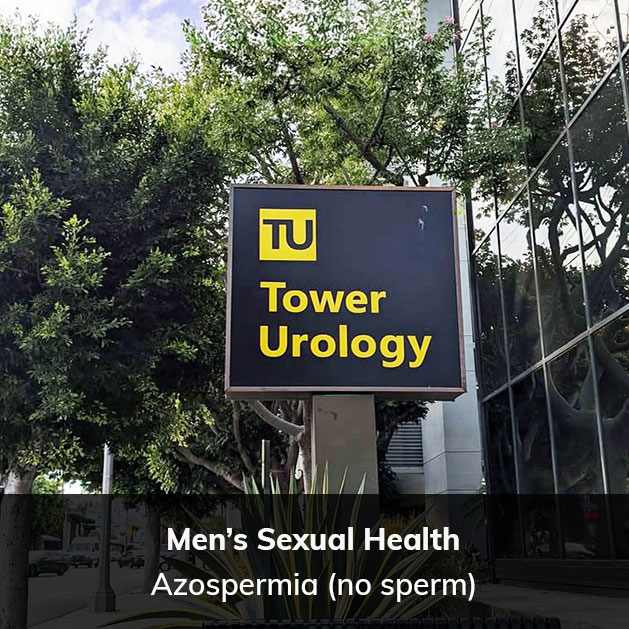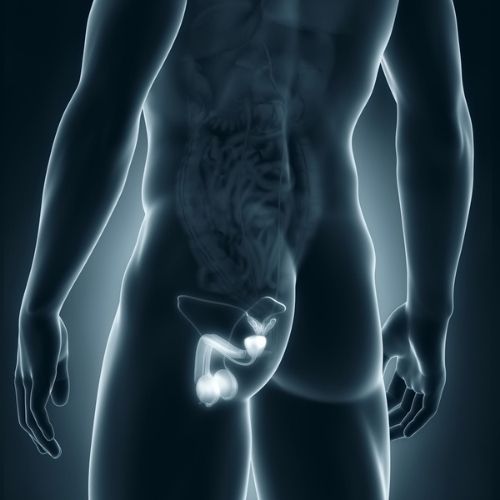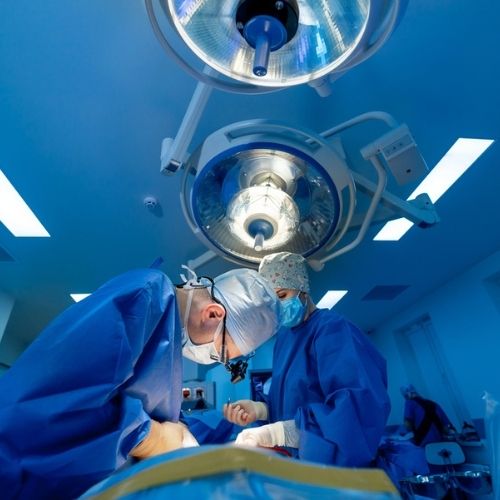What is azoospermia?
Azoospermia is the term for the absence of sperm in semen and is a leading cause of male infertility. After a vasectomy is performed as a method of permanent birth control, the lack of sperm is the desired outcome and expected. However, azoospermia can also occur for other reasons and may cause concern for couples.
At Tower Urology, our board-certified urologists specialize in diagnosing and treating azoospermia, utilizing their expertise, advanced technology, and a personalized approach tailored to each patient. Whether azoospermia is caused by a prior vasectomy procedure, genetic abnormalities, hormonal imbalances, or physical obstructions, our team provides expert solutions to help patients achieve their reproductive goals.

When does azoospermia occur?
Azoospermia occurs when semen contains no detectable sperm, making natural conception impossible without medical assistance. This condition affects approximately 10-15% of infertile men. Causes of azoospermia can range from environmental or genetic factors to trauma or surgical procedures.
What are the symptoms of azoospermia?
Azoospermia itself has no direct symptoms and doesn’t affect sex drive or sexual intercourse. It is typically only discovered during a fertility evaluation. However, underlying conditions may cause hormonal imbalances, reduced testicular size, or issues with sexual function unrelated to azoospermia.
What are the different types and causes of azoospermia?
Simply stating that there is zero sperm count in the ejaculate says little about the reasons for azoospermia or its possible solutions.
Causes of azoospermia can range from environmental or genetic factors or can be attributed to past trauma or surgical procedures. Further investigations are typically necessary to help your physician determine the most effective treatment approach.
There are two main types of azoospermia, each with distinct causes:
Obstructive azoospermia
Obstructive azoospermia (OA), also known as post-testicular azoospermia, results from blockages in the male reproductive tract and accounts for approximately 40% of all cases.
People with OA often have normal spermatogenesis — that is, they can produce normal sperm. However, the sperm won’t be able to find its way out of the testicles due to a physical defect in any of the following areas:
- Between the testes (where the sperm is produced) and the epididymis (the coil-like, thin tube where sperm matures).
- Along the vas deferens, a long, straight tube that carries mature sperm down to the seminal vesicle, where it mixes with other semen components.
- In the ejaculatory duct (ejaculatory duct obstruction), the section that carries now “full” semen down the urethra.
The most common cause of OA or post-testicular azoospermia is, unsurprisingly, a vasectomy. This procedure directly cuts the vas deferens, which is why it’s considered a form of permanent birth control. Thanks to modern surgical techniques, vasectomies are now reversible, although the reversal procedure is not always successful.
Other common causes of OA include:
- Congenital abnormalities, such as being born without a full vas deferens.
- Injuries to the scrotum.
- Infections in the ejaculatory duct.
- Cysts near the vas deferens.
- Chronic conditions, such as cystic fibrosis.
Non-obstructive azoospermia
Approximately 60% of all men with this condition suffer from non-obstructive azoospermia (NOA). This is a more severe form of azoospermia, and it happens when there is no sperm production at all.
This type of azoospermia can be classified as testicular and pretesticular azoospermia, depending on whether the absence of sperm is due to a problem in the testicles or a lack of hormones that trigger sperm production.
Any of the following can cause NOA:
- Congenital genetic disorders, such as Klinefelter syndrome or Y chromosome deletion.
- Varicocele, or when the veins around the scrotum become enlarged, can cut off irrigation to the testicles.
- Sertoli cell-only syndrome, or germ cell aplasia, is a congenital disease.
- Serious testicular injury or testicular cancer.
- Low levels of testosterone or follicle-stimulating hormone (FSH) which can keep sperm from maturing properly (maturation arrest).
- Exposure to radiation (including radiotherapy) or toxins.
- Some types of medication, especially chemotherapy drugs, can also damage sperm production.
Finally, some cases of NOA are idiopathic — that is, we can’t tell precisely what factors are causing the lack of sperm production.
How is azoospermia diagnosed?
Azoospermia presents with no apparent symptoms. Most people with it can have sex, ejaculate, and orgasm without any issues. The problem only becomes evident when a couple has trouble conceiving.
At this point, most fertility experts recommend a comprehensive examination for both the man and the woman.
For an infertile man to be officially diagnosed with azoospermia, they need to have no sperm present at all on at least two separate semen analyses. However, this label is only half the equation: determining the type and cause requires a more thorough investigation.
At Tower Urology, we employ a comprehensive approach to diagnose azoospermia accurately. This process will take into account each patient’s:
- Entire medical and family history, including any past surgeries or accidents, lifestyle factors, and fertility history.
- Physical exam, paying particular attention to any abnormalities near the genital area.
- Blood test results, especially those related to hormone levels.
- Pelvic ultrasound or MRI.
- Genetic testing.
- Testicular biopsy.
Can azoospermia be misdiagnosed?

Yes, azoospermia can appear very similar to other fertility conditions, such as oligospermia (a low sperm count) or retrograde ejaculation. However, the more delicate part of the process is generally to determine the correct type of azoospermia, which can be remarkably tricky for patients with rare genetic conditions or idiopathic cases (where the cause is unknown).
What are the treatment options for azoospermia?
Deciding on the appropriate treatment depends on whether the azoospermia is obstructive or non-obstructive.
Treatment for obstructive azoospermia
As a general rule, OA is the more straightforward type to treat. Vasectomies can often be reversed, and blockages in the vas deferens or the ejaculatory duct can be corrected with microsurgery.
If this fails, sperm retrieval techniques such as testicular sperm extraction (TESE) or percutaneous sperm aspiration (PESA) allow us to extract healthy sperm, which can then be used for in vitro fertilization (IVF).
Treatment for non-obstructive azoospermia
NOA is often trickier to treat. Conception may require combining different treatments to increase sperm production to more than zero.
- Hormone therapy can help fix a hormonal imbalance and stimulate sperm production.
- For men with varicocele, reconstructive surgery can help restore blood flow to the testes and may restart sperm production.
- Lifestyle changes and medication can help improve the chances of producing sperm.
Any of these methods can then be combined with a mini-TESE procedure, an advanced microsurgical technique that can help us locate sperm directly from the testes. The sperm must then be tested to ensure it is mature, has good motility, and is in good shape.
Finally, with the help of fertility specialists, the viable sperm can be used for IVF or intracytoplasmic sperm injection (ICSI).
Aspermia vs. azoospermia — what’s the difference?
Aspermia refers to the complete absence of semen during ejaculation, while azoospermia means semen is present but contains no sperm.
Why trust Tower Urology for your men’s sexual health needs
Tower Urology’s board-certified urological team has been a leader in effectively treating men’s sexual health for over two decades, with specialists trained in all aspects of the field.
The advantage of Tower Urology lies in our unwavering commitment to providing world-class urologic care through advanced technology, personalized treatment plans, and a patient-centered approach. With a reputation for excellence and innovation, we deliver superior outcomes that distinguish us as leaders in urologic health.
We invite you to experience the personalized care and expertise of Tower Urology.
Tower Urology is a proud affiliate of Cedars-Sinai Medical Center, ranked #1 in California and #2 nationwide by U.S. News & World Report. This partnership reflects our dedication to delivering the highest standard of urologic care alongside the best urologists in Los Angeles. Our years of experience and access to Cedars-Sinai’s world-class facilities ensure that our exceptional and innovative urological care positions Tower Urology as a leader in Southern California.
Tower Urology is conveniently located for patients throughout Southern California and the Los Angeles area, including Beverly Hills, Santa Monica, West Los Angeles, West Hollywood, Culver City, Hollywood, Venice, Marina del Rey, and Downtown Los Angeles.
Our services include treatment for erectile dysfunction, low testosterone, male infertility, vasectomy, andvasectomy reversal.
Azoospermia Frequently Asked Questions
While natural conception is not possible with azoospermia, assisted reproductive techniques such as IVF with sperm retrieval can help couples achieve pregnancy. The success rate for sperm retrieval in cases of azoospermia, especially NOA, can vary depending on the technique used but typically is between 40% and 60%.
No, azoospermia does not cause cancer, but in some cases, it may be linked to testicular cancer or genetic abnormalities that increase cancer risk.
Sources
Reproductive Chances of Men with Azoospermia Due to Spermatogenic Dysfunction
https://pmc.ncbi.nlm.nih.gov/articles/PMC8036343/
Surgical sperm retrieval: Techniques and their indications
https://pmc.ncbi.nlm.nih.gov/articles/PMC3114571/































































